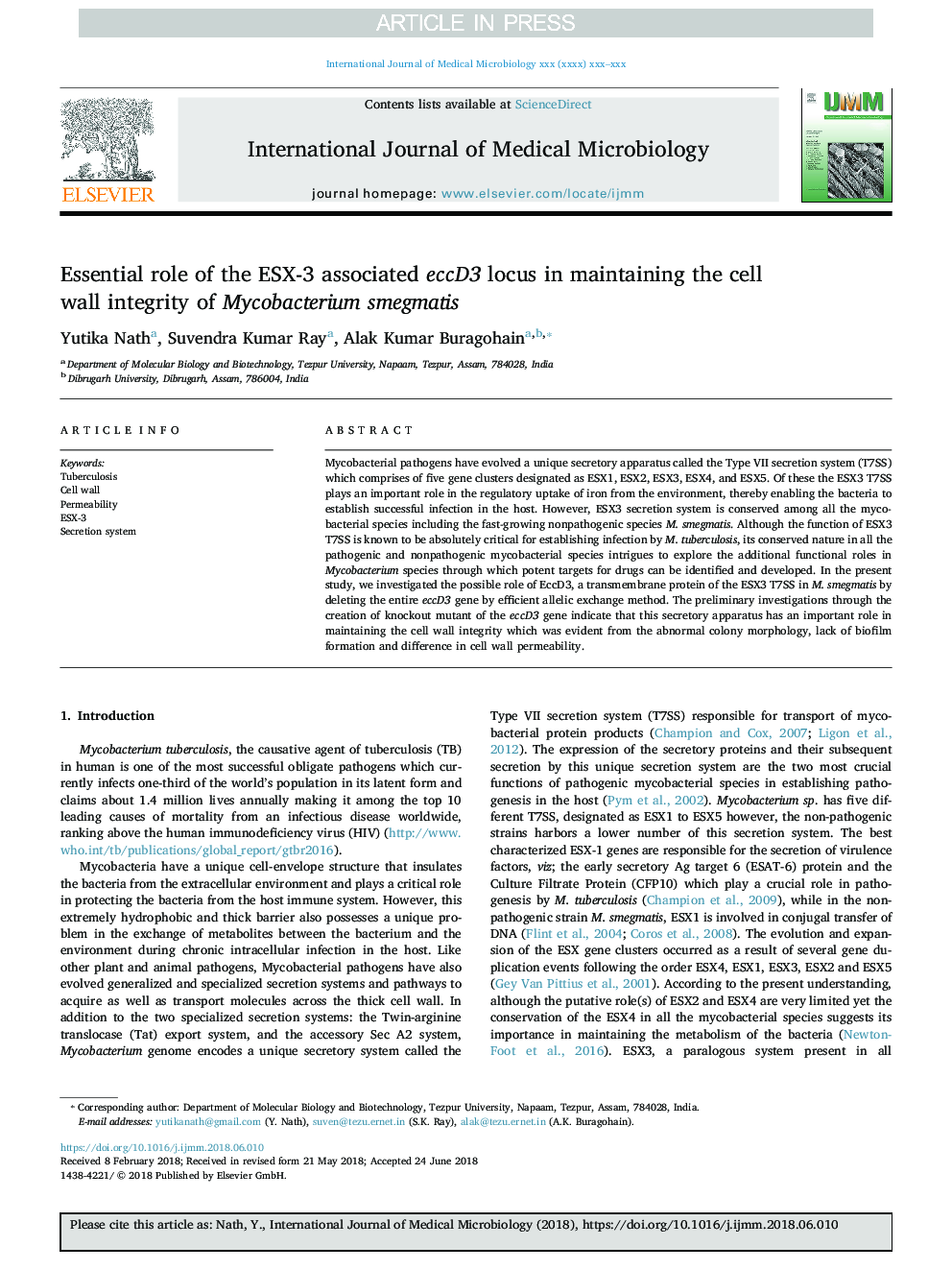| Article ID | Journal | Published Year | Pages | File Type |
|---|---|---|---|---|
| 10157217 | International Journal of Medical Microbiology | 2018 | 12 Pages |
Abstract
Mycobacterial pathogens have evolved a unique secretory apparatus called the Type VII secretion system (T7SS) which comprises of five gene clusters designated as ESX1, ESX2, ESX3, ESX4, and ESX5. Of these the ESX3 T7SS plays an important role in the regulatory uptake of iron from the environment, thereby enabling the bacteria to establish successful infection in the host. However, ESX3 secretion system is conserved among all the mycobacterial species including the fast-growing nonpathogenic species M. smegmatis. Although the function of ESX3 T7SS is known to be absolutely critical for establishing infection by M. tuberculosis, its conserved nature in all the pathogenic and nonpathogenic mycobacterial species intrigues to explore the additional functional roles in Mycobacterium species through which potent targets for drugs can be identified and developed. In the present study, we investigated the possible role of EccD3, a transmembrane protein of the ESX3 T7SS in M. smegmatis by deleting the entire eccD3 gene by efficient allelic exchange method. The preliminary investigations through the creation of knockout mutant of the eccD3 gene indicate that this secretory apparatus has an important role in maintaining the cell wall integrity which was evident from the abnormal colony morphology, lack of biofilm formation and difference in cell wall permeability.
Related Topics
Life Sciences
Biochemistry, Genetics and Molecular Biology
Biochemistry, Genetics and Molecular Biology (General)
Authors
Yutika Nath, Suvendra Kumar Ray, Alak Kumar Buragohain,
